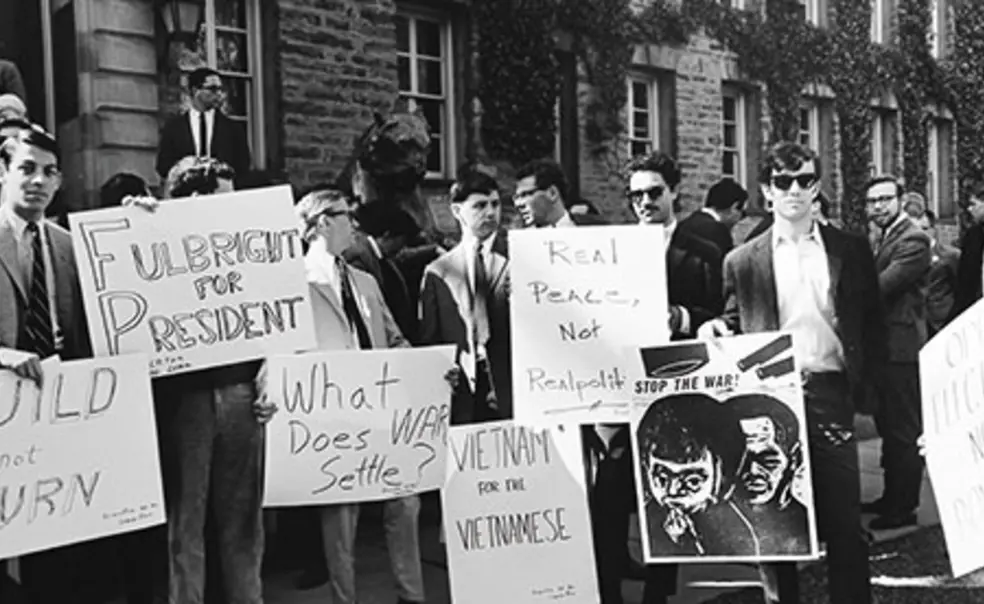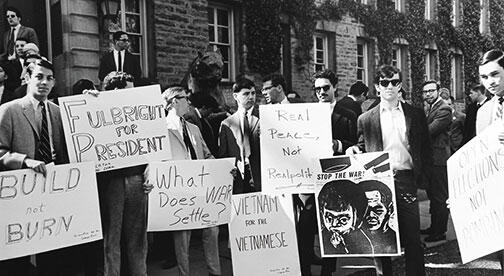Revisiting the Vietnam Era
More than 1,000 people demonstrated outside of Nassau Hall to end the University’s relationship with the Institute for Defense Analyses in an anti-Vietnam War protest May 2, 1968. The photo is part of a new exhibition at Mudd Library titled “Suits, Soldiers, and Hippies: The Vietnam War Abroad and at Princeton.” The exhibit, which runs through June 5, includes transcripts of private conversations of presidents and policymakers, magazine articles and pamphlets, and photos of student rallies and protests. Included are shots of Commencement in 1970, when many students chose to forgo caps and gowns while carrying anti-war signs; and a photo of the Triangle Club’s controversial performance of Call a Spade a Shovel in 1969.













1 Response
Ned Scharff ’68
9 Years AgoProtesting the Vietnam War, In Jackets and Ties
I believe the On the Campus photograph in the Nov. 12 issue was taken in the spring of 1968, my senior year, when we crowded around Nassau Hall to protest Lyndon Johnson’s escalation of the Vietnam War – in solidarity with our more demonstrably rebellious peers at Columbia and Berkeley. There’s a chance, however, that it was taken a year earlier when LBJ appeared on campus to deliver a speech outside the new Woodrow Wilson School building.
In either case, that we Princetonians dressed so respectfully for the occasion in jackets and ties reflected our desire to comply with the decorum of our parents’ generation. Indeed, ours was very much a generation in transition. At Princeton, the Class of 1968 was the next-to-last to graduate from an all-male campus (our 12 visiting critical-language women excepted). The fervor of our protest on that gentle spring afternoon in 1968 melted almost instantly when President Goheen appeared unannounced on the steps of Nassau Hall to tell us – in his thoughtful, quietly persuasive manner – that he shared our disapproval of that fruitless war and identified with our frustration. Princeton and other leading universities, he told us, had once felt they had a voice in Washington, but the Johnson administration no longer seemed to listen.
More than anyone, I suspect, it was Robert Goheen who set Princeton on course to achieve its current excellence. And it also was President Goheen that afternoon who let us know that not every institution was to blame for the blunders of what we’d come to label “The Establishment.”